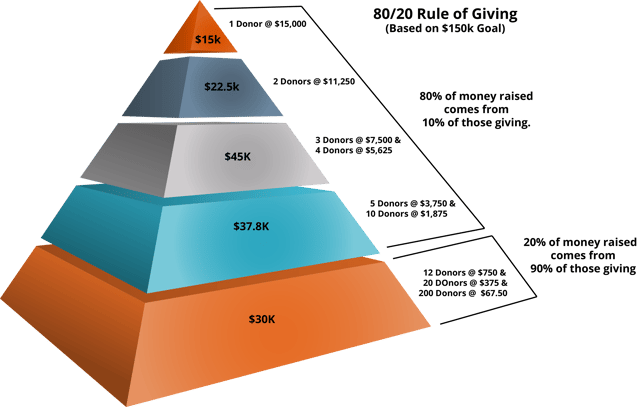
Your board is key to the success of your annual fund, but it’s possible that comes as a surprise to them. If you are a director of development, an annual fund officer, or even the executive director or head of school, you may have heard comments, like these:
“We know the goal is high, but that is why we hired you.”
“Suzi (or John), will get the money for us.”
When you hear comments like these, it is time for some education!
Finding support for your school is a team sport. The director of development is sometimes coach, at times team captain, but the board is the A team.
All too often, the board was not recruited with this understanding. Giving. Getting. Yes, it is part of the board's responsibility, but if it is not clear, what should you do?
Meet with each board member individually. Grab a cup of coffee. Chat about the annual fund. Talk about the good that meeting the goal can do, and listen intently for how each member sees their role in the fund’s success. After talking (and listening) to each member, you will have a good idea who comes closest to understanding a board member’s role in fundraising. You are looking for board members who understand their role's responsibility to make leadership gifts, share with others about why they give, introduce you to others who are likely to care about your mission, attend events, make others feel welcome and act as a positive presence.
Once you have identified who has the best understanding of their role as a board member, feed them everything they need to be an effective advocate to the rest of the board – helping each member understand the importance of their role in reaching or exceeding the annual fund goal and why this matters. (I always stress that the only value money has is the good it makes possible.) Give your advocates articles, websites, books, webinars and conference opportunities. Respect the fact that they are busy and when possible, send them summaries briefly highlighting crucial points. Call and email with compelling stories about the good that gifts are making possible and encourage them to share the stories.
Ask for a few minutes at each board meeting to do two things:
1. Share Mission Moments – heart-felt stories of the good gifts made possible;
2. Share research data about the power of an engaged and giving board.
Help the board write up clear expectations for board member roles that include personally significant giving. One way to phrase this is to say that board members will make your school one of their top three philanthropic priorities. If these clear expectations are not currently part of board recruitment, encourage the board to make it part of all future recruitment. Adding expectations may cause some current members to rethink their commitment. It is okay to “bless and release” folks who are interested in advising, but not in supporting. There is another role for them.
Help the board understand that they have fiduciary responsibility for the school. They hold its future in trust. That includes assuring that the school has the needed financial resources. When they approve the budget, they are in part accepting responsibility for meeting it. So, use the budget approved by the board to produce a gift pyramid.

This graphic shows to reach a $150k goal, we need x number of gifts at the $15,000 level; x number of gifts at the $7,500 and so on.
Sit with each board member individually to discuss possible donors at each level. Who has both interest and capacity? This can help make it clear that the school needs them as a donor at a particular level. Picture conversations, like: “Your family is one of the few in our community who even has the capacity to consider a gift at this level. Moreover, if you give, I think it will inspire John to do the same.”
As soon as you have that first significant board gift, encourage that person to join you in approaching the next member. All you want them to do is share why they chose to give a leadership gift. They do not have to ask for anything. Give them the opportunity to leave if it is more comfortable before you do the asking. You will ask the next board member for a specific amount that matches their interest and capacity.
Another approach I have used personally is to decide what my family can give. Then I go to the board and say, “My husband and I have decided to give 3.75% of our combined income to this school. We invite you to join us at that level. You can pick whether you want to figure your percentage before or after taxes. We chose to do before. Obviously, 3.5% of our income results is a different amount than 3.5% of a board member's income, but we will both make the same sacrifice. Not everyone gave 3.5%, but every member's contribution increased.
As the board members begin to get on board – start to give and begin to understand that giving matters, give them lots of positive feedback. Call, email, announce at board meeting examples of the good their gifts are making possible. Share lots of stories of lives changed.
Let them know they are making a difference - because they are!
About the Author: Lari has served as a Director of Development, Director of Marketing and Communications, and Director of Admissions and Alumni Relations. She has been a one-person office and managed large staffs. She is currently a nonprofit consultant with clients across the nation.
©2017 Snowman Software



